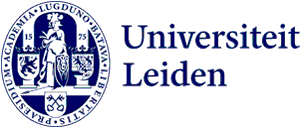
Green roofs and tile flipping: research in The Hague on the best approach to climate and species diversity
Does a communal garden provide cool air and warm neighbourly relations? Does an additional row of trees increase biodiversity? These kinds of questions are key in the COMBINED project, on which Leiden scientists and residents of The Hague, among others, can work for six years with 4 million euros from NWO.
Researchers from the Institute of Environmental Sciences Leiden (CML) will conduct research in The Hague to find out how measures such as green roofs and a tile-flipping championship affect climate, nature and society. They are participating in the COMBINED project, in which universities, colleges, municipalities and other partners work together to see how changes in biodiversity and climate affect each other. This should lead to a successful approach against climate change and biodiversity loss. The Dutch landscapes of grassland, city and forest will be the central focus.
Residents will measure themselves
The project is taking place as part of the National Science Agenda (NWA) in collaboration with the Ministry of Agriculture, Nature and Food Quality. Environmental scientist Roy Remme is one of the Leiden researchers taking part. ‘We are going to ask residents of The Hague to measure air temperature and humidity, for example, and soil moisture in gardens and green spaces. They may also track species richness in apps like ObsIdentify or via DNA particles in the air.’
With this and other data, the researchers intend to create models showing the link between nature measures and climate. For example, an interactive map of The Hague, in which you can adjust the number of green roofs in a neighbourhood and then see the effects of this on biodiversity and wind chill. The Atlas Natural Capital, on which Remme collaborated while working at RIVM, gives an impression of what that might look like. As does the international software InVest to calculate green scenarios, in which Remme was also involved.
‘Numerical data are crucial when you want to make something like that, specifically focusing on the link between nature and climate,’ says Remme. ‘With this, we can better understand how we can use different types of urban vegetation to create a more pleasant living environment for people and other organisms.’
The effect of tree rows and dune strips
Remme is working with CML colleagues Alexander van Oudenhoven and Peter van Bodegom. They will evaluate existing adaptations in the urban landscape. Van Oudenhoven: ‘It concerns so-called nature-based solutions such as green roofs, communal gardens, rows of trees and dune strips. The Dutch tile-flipping championship is another good example.’
The scientists are finding out whether such measures promote species diversity, improve air quality and lower the temperature. ‘But we are also looking at social aspects,’ Van Oudenhoven illustrates: ‘Do people appreciate these interventions? Do they address the problems people experience in the neighbourhood? Does everyone have equal access to them? Do they align with other policy goals?’

Where is the competition?
The city’s relationship with its surrounding landscape will also be a focus of the study. Around The Hague, these are dunes and agricultural land. ‘We want to investigate how we can make these kinds of landscapes more resilient to climate change too,’ says Remme, ‘Concerning other issues, such as the need for recreation in the dunes or nitrogen problems in the agricultural landscape. And the competition for space between, say, recreation, drinking water supply, housing and nature conservation: how does that affect climate adaptation opportunities?’
All benefit from predicting and monitoring
Apart from the Municipality of The Hague, stakeholders include the Netherlands Environmental Assessment Agency, the Forestry Commission and civil society organisations. All benefit from finding ways to better predict and monitor policy impacts. In order to efficiently realise optimal urban planning that ensures that people, but also many different plant and animal species, can cope with increasingly extreme living conditions, such as drought and heat stress.
Remme expects a lot from the collaboration with colleges and Naturalis Biodiversity Center, among others. ‘Within the urban research we have done so far, there was little focus on the relationship with the environment outside the city. However, that could be important for climate-nature relations. In addition, I hope the other groups’ research on grasslands and forests will lead to additional and hopefully surprising insights that we can benefit from in cities to strengthen nature and society and make them more resilient.’
Text: Rianne Lindhout
Photos: Flickr RdA Suisse and Pexels Sonny Vermeer
